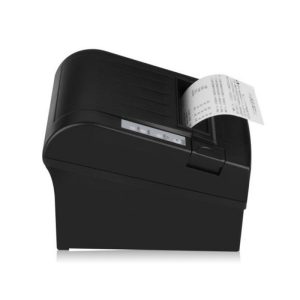Social Media Strategies That Drive Cardiology Patient Leads

In today’s competitive healthcare industry, cardiologists must do more than provide excellent patient care — they need to actively market their services to stand out. Social media has become one of the most powerful tools for healthcare professionals, especially when it comes to lead generation for cardiology. Platforms like Facebook, Instagram, LinkedIn, and even YouTube are no longer just for networking; they are essential for building trust, educating patients, and converting online audiences into loyal patients.
In this blog, we will explore the best social media strategies to help cardiologists grow their practices and generate a steady flow of qualified patient leads. And with the expertise of IndeedSEO, your practice can maximize its online presence while focusing on what truly matters—patient care.
Why Social Media Matters for Cardiology Lead Generation
Cardiology is a specialized medical field, often dealing with life-saving treatments and long-term patient care. Patients searching for cardiologists online are typically looking for immediate solutions to serious health concerns. This is where social media comes into play.
Unlike traditional advertising, social media allows you to:
- Educate patients with credible information.
- Engage with potential patients in real-time.
- Establish trust by showcasing expertise.
- Target specific audiences with paid campaigns.
Ultimately, social media platforms provide an unmatched opportunity for lead generation for cardiology, ensuring you reach the right patients at the right time.
Strategy 1: Create Educational Content That Builds Trust
Patients dealing with heart-related concerns often feel overwhelmed. They search for reliable information online before booking appointments. By consistently posting educational content, cardiologists can position themselves as trusted experts.
Examples of content ideas include:
- Infographics about common heart conditions such as hypertension, arrhythmia, or coronary artery disease.
- Short videos explaining procedures like angioplasty or echocardiograms.
- Myth-busting posts that debunk misconceptions around heart health.
- Patient success stories (with permission) that highlight positive outcomes.
When patients see valuable, easy-to-understand content, they are more likely to follow your page, engage with your posts, and ultimately contact your practice.
Strategy 2: Leverage Paid Advertising for Precision Targeting
Organic content is important, but if you want consistent and measurable results, investing in paid social media ads is essential. Platforms like Facebook and Instagram allow cardiologists to target highly specific demographics—such as age, location, gender, interests, and even health-related behaviors.
For example, you can run ads targeted at individuals over the age of 40 in your local area, highlighting free heart check-up camps or consultations. This targeted approach ensures your marketing budget is spent efficiently, delivering higher-quality leads.
At IndeedSEO, we specialize in creating high-converting ad campaigns designed to maximize lead generation for cardiology practices.
Strategy 3: Use Video Marketing to Humanize Your Practice
Video is one of the most powerful content formats for healthcare marketing. Platforms like Instagram Reels, YouTube Shorts, and Facebook Live allow you to share authentic and engaging content.
Some effective cardiology video ideas include:
- Doctor introductions to showcase approachability and build trust.
- Explainer videos about preventive care tips for heart health.
- Behind-the-scenes clinic tours to give patients a glimpse of your facilities.
- Live Q&A sessions to answer common cardiology-related questions.
Videos not only grab attention but also humanize your practice, making it easier for patients to connect with you on a personal level.
Strategy 4: Engage with Your Audience Regularly
Posting content is only half the job—engagement is what makes social media powerful. Cardiologists should respond to comments, reply to direct messages, and acknowledge feedback.
Engagement tips include:
- Hosting weekly polls on Instagram stories about lifestyle habits that affect heart health.
- Answering frequently asked questions in dedicated posts.
- Thanking followers for testimonials or reviews.
- Encouraging patients to share their health journeys online.
The more interactive your page is, the more likely patients will feel connected and trust your services. Strong engagement builds a loyal online community that translates into real-world patient leads.
Strategy 5: Optimize Social Media Profiles for Lead Conversion
Having an active presence is not enough—you need to optimize your social media profiles to convert visitors into leads.
Here’s how to make your profiles work for you:
- Use a clear, professional profile picture (such as your logo or a professional photo).
- Include a compelling bio with keywords like “expert cardiology care in [city].”
- Add a call-to-action button, such as “Book Now,” “Call,” or “Schedule Appointment.”
- Link to a dedicated landing page on your website that captures patient details.
A well-optimized profile ensures that when someone visits your page, they know exactly how to contact you and take the next step.
Strategy 6: Build Trust with Reviews and Testimonials
Patients trust the experiences of others. Sharing authentic reviews and testimonials on your social media pages is a powerful way to boost credibility.
Consider:
- Creating posts that highlight patient success stories (with consent).
- Using video testimonials for greater authenticity.
- Encouraging satisfied patients to leave reviews on Facebook or Google.
Positive stories not only build trust but also encourage potential patients to reach out, boosting lead generation for cardiology.
Strategy 7: Partner with Influencers and Local Organizations
Healthcare influencers and community partnerships can help you expand your reach. By collaborating with local fitness trainers, dieticians, or wellness coaches, you can tap into new audiences already interested in health.
For example, hosting a joint Instagram Live with a nutritionist to discuss “Heart-Healthy Diet Tips” can attract a broader audience while reinforcing your authority in cardiology.
Such partnerships are effective at boosting brand visibility and generating quality leads.
Strategy 8: Track, Analyze, and Improve Campaigns
Finally, no social media strategy is complete without measuring results. Use tools like Facebook Insights, Instagram Analytics, or LinkedIn Campaign Manager to monitor performance.
Key metrics to track include:
- Engagement rates (likes, comments, shares).
- Click-through rates (CTR) on ads.
- Conversion rates (number of bookings generated).
- Audience growth over time.
With the right data, cardiologists can identify what works best and adjust strategies for maximum ROI. Partnering with IndeedSEO ensures you not only execute effective campaigns but also analyze them thoroughly for continuous improvement.
Conclusion
In today’s digital-first world, social media has become an indispensable tool for healthcare professionals. For cardiologists, the opportunity to connect with patients, build trust, and generate leads has never been greater.
By implementing strategies such as creating educational content, running targeted ads, leveraging video marketing, optimizing profiles, and engaging with audiences, you can transform your social media presence into a reliable lead generation for cardiology engine.



